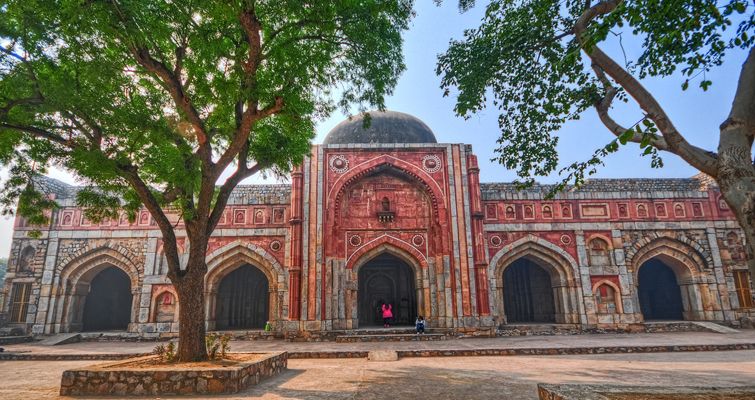
Mehrauli urban village where the monument is located is approachable from all parts of Delhi by well laid out roads and transport system. The nearest metro station is Qutab Minar, which is within walking distance of the mosque. The Indira Gandhi International Airport is 18 km (11 mi) away and the New Delhi Railway Station and Nizamuddin Railway Station are respectively 17 km (11 mi) and 16 km (9.9 mi) away. Visitors are free to visit the monument all weekdays. The practice of Friday prayers is barred in such monuments classified by the body under the category of "non-living heritage structures." "Jamali" was the alias given to Shaikh Fazlu'llah, also known as Shaikh Jamali Kamboh or Jalal Khan, a renowned Sufi saint who lived during Lodi Dynasty and the Mughal Dynasty, a period from the rule of Sikander Lodi to that of Babur and Humayun. The name "Jamali" is Urdu, though it originates from "Jamal," which means "beauty." Jamali was a popular poet who traveled widely around Asia and the Middle East. He became a court poet during Lodi Dynasty rule and continued to enjoy the patronage of the Mughal rulers Babur and his son Humayun. His poetry mirrored the Persian mysticism of the times and his two famous works are The Sun and Moon and The Spiritual Journey of the Mystics. His tomb was completed during Humayun's rule. According to the oral stories and traditions, Kamali was an unknown person who was Jamali's disciple and his lover. The Jamali Kamali mosque, positioned in an enclosed garden area, built first during the years 1528-29, has a southern entry. It is built in red sandstone with marble embellishments. It is claimed to be a forerunner in the design of Mughal mosque architecture in India. The prayer hall, fronted by a large courtyard, has five arches, with the central arch only having a dome. The size of arches increases towards the central arch, which is the largest of the five arches embellished with beautiful ornamentation. The spandrels of the arch are decorated with medallions and ornament. Fluted pilasters exquisitely decorate the central arch. The prayer wall on the west has niches with mihrab. The niches and walls are decorated with a few Koranic inscriptions. A porch around the mosque provides access to the two-storied mosques, and octagonal towers adorn the four corners. The rear end of the mosque has oriel windows, apart from a small window on the central arch. The tomb of Jamali-Kamali is a decorated 7.6 m (25 ft) square structure with a flat roof located adjacent to the mosque on its northern side. Inside the chamber, the flat ceiling is plastered and ornately decorated. It is painted in red and blue with some Koranic inscriptions, and the walls are adorned with inlaid colored tiles inscribed with Jamali's poems. The decorations in the tomb have been described as giving the impression of "stepping into a jewel box". In the Jamali Kamali Mosque and Tomb, the tomb chamber has two marble graves: Jamali, the saint-poet, and Kamali.